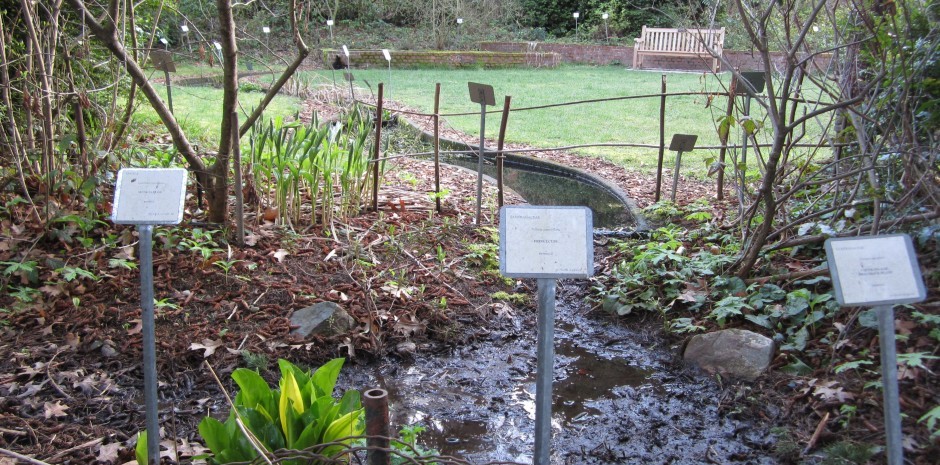This summer has gotten off to a warm start. I forgot my camera today but here are some of last week’s shots.

Mimulus cardinalis (scarlet monkeyflower) section C
According to Daniel Moerman, in his encyclopedic Native American Ethnobotany (Timber Press, 1998), the Karok people, native to a region that is now in northern California and southern Oregon, are reported to have used an infusion of scarlet monkeyflower as a wash for newborn babies.

Celosia cristata (cockscomb, ji guan hua) section E
It’s no mystery how Celosia cristata got the common name cockscomb. The flowers look like they should be on top of a rooster’s head. In Traditional Chinese Medicine (TCM), the flowers are used to cool the blood and control bleeding.

Cimicifuga racemosa (black cohosh) section D
Black cohosh root is used to treat symptoms of menopause, as an alternative to hormone therapy. It’s also used to treat menstrual cramps and was widely and variously used by native peoples of eastern North America. An Asian species, C. foetida, is used in TCM. We have two related species, C. elata and C. laciniata, in Washington state. They are not as widespread as C. racemosa and perhaps that explains why neither is mentioned in Moerman’s Native American Ethnobotany.

Larrea tridentata (creosote bush) xeriscape bed
I don’t remember the creosote bush flowering before but I think I’m noticing more flowers now that I carry a camera around.

Asclepias tuberosa (butterfly weed, pleurisy root) section C and xeriscape bed
It gets one of its common names, pleurisy root, because it has been used to treat pleurisy, which is inflammation of the inner lining of the chest and lungs. It gets its other common name, butterfly weed, because butterflies love its nectar. It’s drought tolerant and beautiful when flowering, a good addition to your xeriscape bed.

Pelargonium sidoides (umckaloaba) section D
Native to South Africa, umckaloaba has traditionally been used to treat acute bronchitis and other respiratory conditions. As is often the case, the effectiveness of a traditional remedy has been demonstrated in clinical trials:
http://www.ncbi.nlm.nih.gov/pubmed/12807337
http://www.mskcc.org/cancer-care/herb/pelargonium-sidoides
The flowers are dark purple, almost black, and their scent is intoxicating. I lift the plants in late autumn, pot them up and keep them in a place where they are cold but not freezing, then I replant outside in spring.

Houttuynia cordata (yu xing cao) section F
Foliage of yu xing cao smells like raw fish and is used as food and medicine from China to Japan and India. I keep it contained with a metal barrier in the shade with only a moderate amount of water and it still threatens to escape. Be careful planting it in your garden.

Papaver somniferum (breadseed poppy, opium poppy) garden borders
This variety is called Danish flag. If the flag of Denmark really looked like that, I’d consider defecting(though it’s doubtful they would accept me). I love this poppy, not just because it is beautiful, but because it produces a lot of seeds. The breadseed poppy that produces the seeds for your bagels and pastries and breads is also the opium poppy that produces the important though addictive pain reliever, morphine, and the street drug, heroin.

Nigella sativa (black seed) section A
Less-adorned cousin of Nigella damascena (love in a mist), black seed is an easy annual to grow and its seeds are sold as a food and a medicine. Check out the profile from the Memorial Sloan Kettering Cancer Center:
http://www.mskcc.org/cancer-care/herb/nigella-sativa

Gentiana tibetica (qin jiao) section E
Used in traditional Tibetan and Chinese medicine, qin jiao is an easy plant to grow. We all might consider consuming more bitter food/medicine; and gentian is bitter. I’ll leave you with a short article from Dr. Andrew Weil:
http://www.drweil.com/drw/u/QAA401077/Is-Bitter-Better.html
a little bitter
helps gallbladder and liver
learn to like the taste
See you in the garden.







































































































